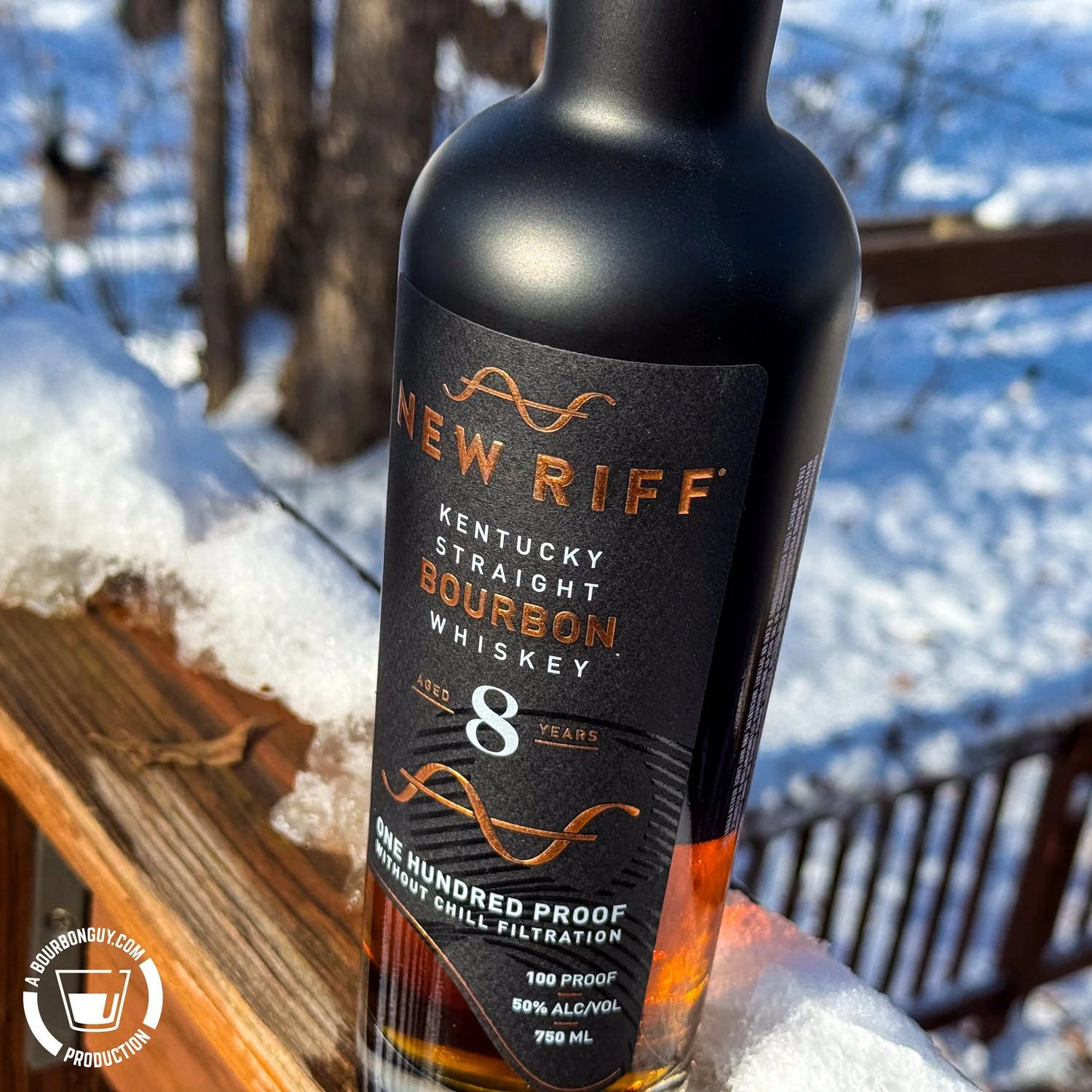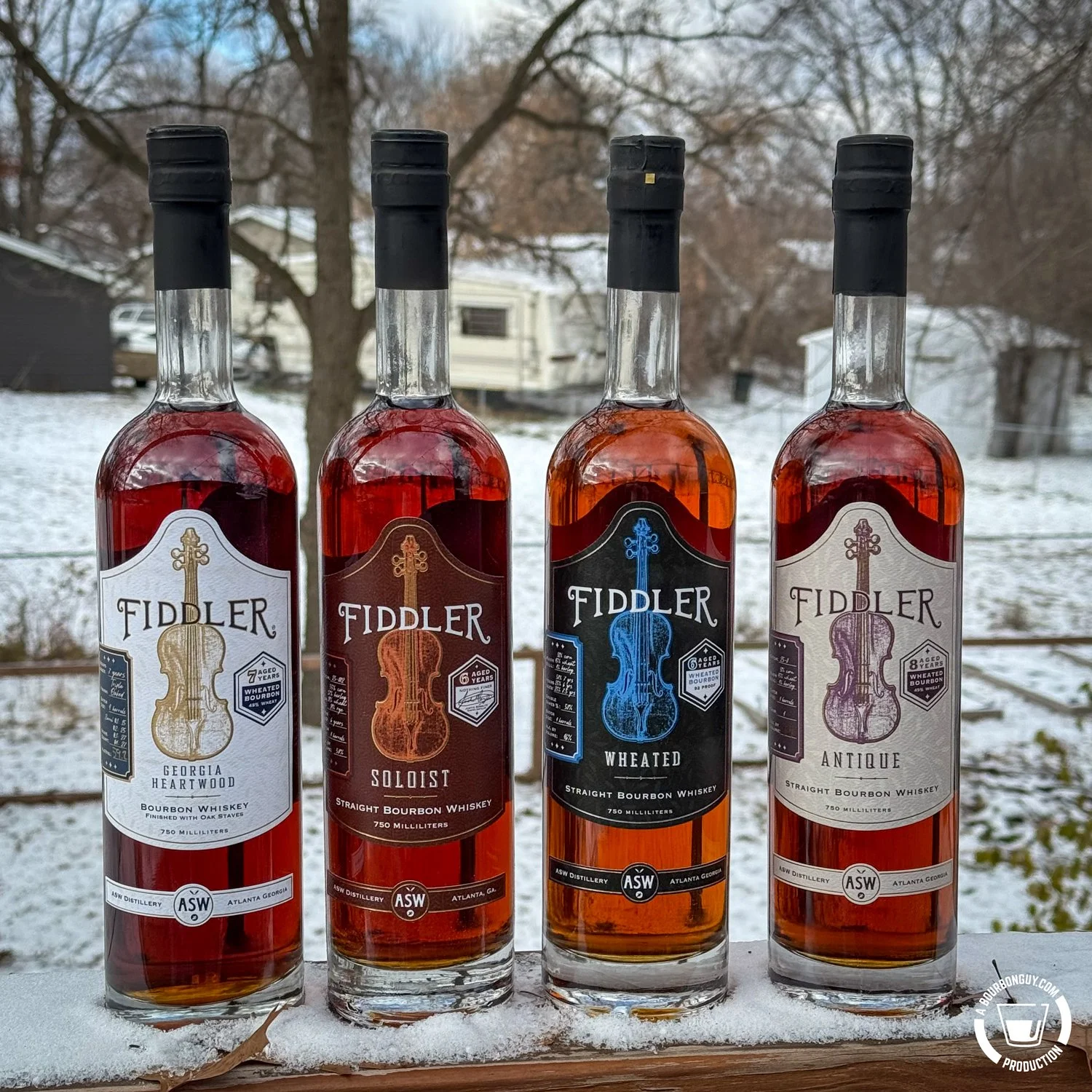ASW Distillery in Atlanta, Georgia sent me an email a little over a month ago asking my favorite whiskey—and then saying that they hope they can compete for the title. I loved that confidence and told them to please send a sample over. And they followed through with four! I’ve been sitting on them for a couple of weeks now because trying to find time to taste four whiskeys in a week, when things like a clean palate are a consideration, is difficult (especially when one of those weeks included Thanksgiving). But I finally have them done and am ready to go.
ASW sells a combination of in-house distilled whiskey, whiskey sourced from Indiana, and blends of the two. We received one in-house-distilled bottle and three sourced-and-finished bottles. I’ll start with the in-house and move on to the sourced after.
Fiddler Soloist
Purchase Info: This bottle was provided at no cost for review purposes. MSRP is $74.99 for a 750 mL bottle.
Price per Drink (50 mL): $5.00
Details: Batch 25-02. Mashbill: 55% corn, 17% Malted Barley, 14% Malted Wheat, 14% malted rye. 6 years old. Batch size four barrels. 50% ABV.
Nose: Oak, leather, red fruit, caramel, and nutmeg.
Mouth: Caramel, red fruit, malted grains, cinnamon, nutmeg, and oak.
Finish: Somewhere between gentle and warm. Medium length. Lingering notes of caramel, cinnamon, malted grains, chocolate, and nutmeg.
Thoughts: If I had only had one sip of this, it would have had a neutral rating. That first sip was strong on the malted grain notes, which aren't my personal favorite flavors. However, as we progressed through the tasting, the malted notes receded and integrated with the caramel, oak, and baking spice notes. At the end of the tasting, I can honestly say that I really enjoyed it and can't wait to try the others. I like this one. I’m still not 100% sold that I would personally buy it because of the malted grain notes, but it is a very well put together whiskey that those that enjoy malted grain notes will enjoy.
Fiddler Georgia Heartwood
Purchase Info: This bottle was provided at no cost for review purposes. MSRP is $79.99 for a 750 mL bottle.
Price per Drink (50 mL): $5.33
Details: Indiana-distilled wheated bourbon (presumed MGP) finished with Georgia oak staves. 59.2% ABV. 7 years old. Batch size: 4 barrels.
Nose: Oak, maple, caramel, almond, and cinnamon
Mouth: Sweet and spicy with notes of cinnamon, oak, maple, almond, caramel, and vanilla.
Finish: Warm and long. Lingering notes of Caramel, Vanilla, and oak.
Thoughts: This is really good. Very sweet, which works nicely with the spicy notes. Not much to say here—this started with the good bones of a (presumed) MGP bourbon, and they enhanced it. I'm enjoying it a lot.
Fiddler Wheated
Purchase Info: This bottle was provided at no cost for review purposes. MSRP is $39.99 for a 750 mL bottle.
Price per Drink (50 mL): $2.67
Details: Distilled in Indiana. 46% ABV. Batch size: 4 Barrels. Mash bill: 51% corn, 45 % Wheat, 4% barley. Blend ages: 50%-7 years, 25%-6 years, 25%-7.5 years. 50% of the batch is "double oaked."
Nose: Oak, brown sugar, cherry, and baking spice.
Mouth: Brown sugar, allspice, cherry, and oak.
Finish: Medium in length and warmth. Notes of cinnamon, nutmeg, and caramel linger.
Thoughts: This is pretty good. I like it. It’s the lowest proof offering they sent over, and I think that is to its benefit. It is sweet and flavorful with no need for water or ice to tame it. I like it. The price is nice, too.
Fiddler Antique
Purchase Info: This bottle was provided at no cost for review purposes. MSRP is $99.99 for a 750 mL bottle.
Price per Drink (50 mL): $6.67
Details: 8 years old. 55.4% ABV. Mash Bill: 51% corn, 45% Wheat, 4% barley. Batch size: 4 barrels.
Nose: Caramel, cherry, oak, and vanilla.
Mouth: Caramel, cherry, oak, cinnamon, and vanilla.
Finish: Warm and on the longer side of medium. Notes of cinnamon, red fruit, and oak.
Thoughts: This is a cinnamon bomb on the finish. Similar to the Fiddler Wheated in taste, but amped up due to the proof. The mouth is full of caramel and oak. Like the others, this is really good.










